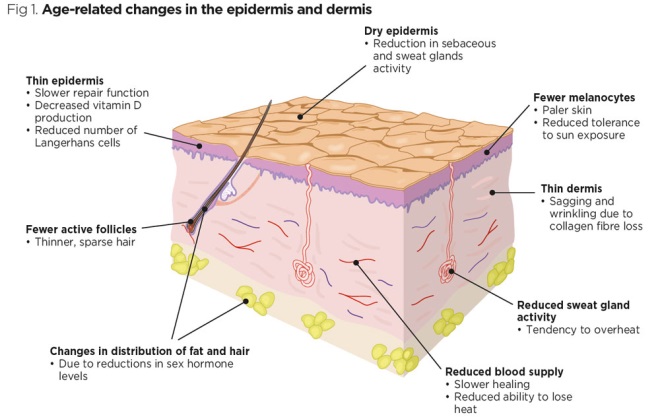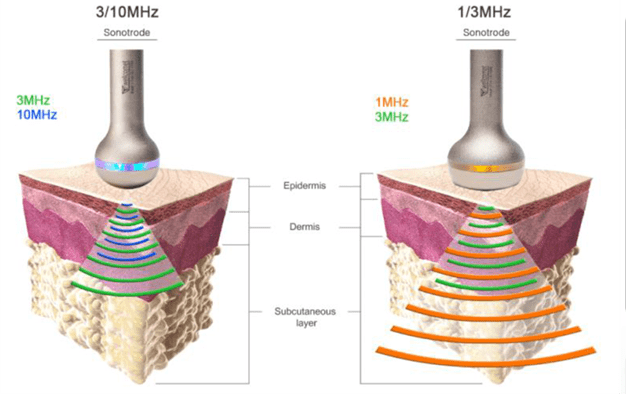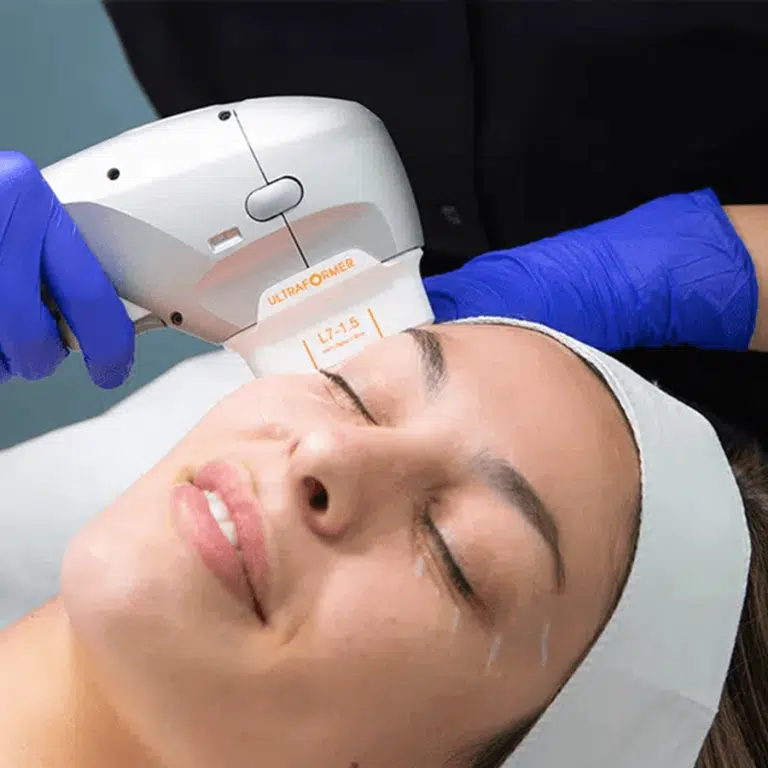Virtually everyone will experience sagging skin at some point in their lives, even if they never deal with pigmentation or acne.
This makes understanding facial sagging essential for your long-term skincare strategy. The growing demand for sagging skin treatments has sparked the creation of numerous devices and technologies.
Aesthetic doctors practicing in Singapore have observed that many of these devices rely more on marketing hype than actual results. I’ve created this comprehensive guide to help you identify the best HIFU treatment options available in Singapore.
In this guide, you’ll find detailed information about different HIFU brands, their benefits, potential side effects, and approximate costs.
My goal is to equip you with the knowledge needed to select the treatment that’s most appropriate for your specific needs!
What is HIFU?
HIFU, which stands for high-intensity focused ultrasound, represents an advanced medical technology that utilizes concentrated sound waves to address both medical and cosmetic tissue concerns.
This technology can effectively penetrate the skin’s outer layer to treat deeper tissue layers. The key advantage is that HIFU doesn’t require any incisions, making it a completely non-invasive treatment option.
Originally, HIFU treatments were developed to target tumor growths in the body (both benign and cancerous).
Today, HIFU has become a sought-after aesthetic treatment due to its ability to non-invasively tighten various skin layers.
What are the different types of HIFU in Singapore?
There are two primary types of HIFU available: Macro-focused HIFU and micro-focused HIFU.
Macro-focused HIFU is typically employed to eliminate unwanted tissues, such as facial or body fat.
Micro-focused HIFU targets very small columns of skin tissues, primarily aiming to contract specific layers and stimulate collagen production.
It’s worth noting that some brands offer only one of these technologies, which can limit their application range.
HIFU Brand Comparison
| Brand | Type & Uses | Features |
|---|---|---|
| Ultherapy | Type: Micro-focused HIFU Uses: Face lifting | Pros: – Established and reliable brand – Efficacious and precise Cons: – Limited depths of application – Expensive for doctors and consumers – White elephant imaging system seldom used by doctors during treatment, because it would require repetitive head movement for hundreds of times |
| Ultraformer | Type: Both micro and macro-focused HIFU Uses: Face lifting, face slimming, body slimming and tightening | Pros: – Most number of applicator depths – Fastest yet precise HIFU that minimizes pain Cons: – Less brand or marketing support – More expensive than other options |
| Liposonix | Type: Macro-focused HIFU Uses: Body slimming and tightening | Pros: – Good for body slimming – Efficient and efficacious Cons: – Can be very painful and intolerable |
What are the benefits of a HIFU treatment in Singapore?
As highlighted earlier, HIFU’s non-invasive nature allows it to tighten skin at various layers without damaging the surface.
Read more: The Ultimate Guide to Fractional Lasers in Singapore
This is particularly valuable when addressing facial sagging, which can occur across multiple layers—from deep retaining ligaments to retinacular fibers within fat compartments and skin.
The diagram below illustrates the different skin layers where collagen loss and sagging commonly occur.

Many patients report an unexpected but pleasant side effect: improved complexion and clearer skin pigmentation following HIFU treatment. This occurs because the treatment stimulates growth factors in the deeper skin layers, promoting collagen production and overall skin rejuvenation.
What happens during a HIFU treatment?
The HIFU treatment process involves several key steps:
- Special ultrasound transducers direct concentrated ultrasound energy to a small focal point where high temperatures cause tissue coagulation.
- Similar to medical imaging procedures, this focused beam of ultrasound energy passes harmlessly through the skin, allowing the focal point to target deeper tissues like fat or muscle layers. At these points, protein around the focal area reaches temperatures exceeding 65°C and undergoes almost instant denaturation.
- By targeting highly focused ultrasound energy at different depths within dermal and subdermal tissues, HIFU creates discrete thermal coagulation points while sparing adjacent non-target tissues.
- This multi-depth tightening helps firm various saggy tissues—from lax ligaments to pendulous fat areas and even addressing skin laxity and wrinkles.
How is HIFU different from other non-invsaive skin tightening procedures?
The primary advantage of HIFU treatment is its “color-blind” ability to tighten tissues at specific, predetermined depths.
This benefit applies regardless of your skin type or color. While HIFU aesthetic treatments may show mild immediate effects, the long-term results become visibly noticeable when applied appropriately.
This contrasts with radiofrequency skin tightening, which heavily depends on each individual’s skin’s ability to conduct electricity (skin impedance)—a factor that varies significantly from person to person.
Depending on the specific type used, laser skin tightening might be dependent on the individual’s skin type or color.
How long does it take to see results from a HIFU treatment?
You’ll notice mild results immediately after treatment, primarily from temporary mild swelling and tightening. However, the full positive outcome becomes apparent after 2 to 3 months. This timeline exists because collagen fibers require time to mature properly.
Some noticeable long-term results include:
- Firmer skin with reduced sagginess
- Smoother facial contours
- Fewer wrinkles and less visible pores
- Brighter, more radiant skin
How long do HIFU results last?
While the results aren’t permanent (nothing really is), they can persist for many years.
Your skin will naturally continue to age, and gravity will inevitably pull your skin downward, eventually reversing HIFU’s benefits.
Read more: The Ultimate Guide to Acne Removal in Singapore
Nevertheless, the collagen synthesized by your body remains present for years, even after just one treatment. You can maintain and enhance these results by undergoing yearly treatments.
Is HIFU considered safe?
HIFU aesthetic devices are classified as medical equipment and should only be utilized at licensed medical centers.
Singapore offers a wide range of brands due to the significant interest in HIFU treatments, but it’s important to understand that not all HIFU treatments provide the same level of safety or efficacy.
Surprisingly, some cases with severe negative side effects occasionally involve the most premium and well-known machines. These adverse effects typically stem from improper machine usage and poor technique, highlighting why doctor experience is extremely important!
What are the side effects of HIFU?
While HIFU is generally considered safe, I categorize risks and side effects into two groups—expected and unexpected:
Expected risks include:
- Mild discomfort during and after the treatment. This is very common.
- Mild swelling, especially following an aggressive treatment.
- Rarely, mild bruising can occur.
- Mild skin irritation and redness immediately after treatment may appear, especially when using more surface-level transducers (1.5mm or 2mm), but typically resolves within a few hours.
Unexpected risks and rare side effects can occur from poor technique or placement:
- Striated patterned “embossing” or swelling on the skin surface resulting from poor transducer contact on skin and inadequate technique.
- Muscle weakness and skin numbness with major nerve damage stemming from insufficient understanding of proper anatomy and transducer placement.
- Fat loss and facial sunkenness, typically from excessive treatment at incorrect depths.
How much does HIFU treatment cost in Singapore?
Treatment costs in Singapore depend on three key factors:
- Brand (Ultherapy charges more than 10 times the price of consumables compared to other branded HIFU treatments—this cost is passed on to consumers).
- Treatment time (Larger areas require more time and command higher prices).
- User expertise and experience.
HIFU treatments for smaller areas can start from less than $500 (usually featured in promotional advertisements), ranging all the way up to over $6,000 for larger areas.
You might encounter “mini-HIFUs” that attempt to upsell you with cross-services or encourage regular repetition of small HIFU treatments.
I advise avoiding these! “Mini-HIFUs” rarely reach the baseline intensity required for effective treatment.
Who is suitable for HIFU?
I’ve mentioned how HIFU works effectively regardless of skin color. Of course, there are some limitations regarding who can benefit from HIFU.
While HIFU is typically suitable for almost anyone experiencing facial sagging, it’s less appropriate for those with:
1. A lot of volume loss
In these cases, fillers or other collagen stimulators will provide more beneficial results.
2. Too much facial sagging
Excessive facial sagging or individuals with severely damaged skin. HIFU encourages your skin layers to repair themselves, but this process may be too slow or insufficient to create significant improvement in severe cases.
How do I get the best results from HIFU?
Obtaining the best possible results requires:
- Finding a doctor who demonstrates patience and knowledge when explaining various options and who knows when to say NO if a treatment would be unsafe or unnecessary for your situation.
- Seeking someone experienced with numerous patients and credible before-and-after case studies to demonstrate their expertise.
Be open to alternative treatment options if necessary to address your concerns effectively.
Just as cough medicine won’t help your headache, HIFU may not be suitable for all your aesthetic issues. Remain receptive to different treatment approaches if you’re seeking a proper medical solution!
What are other non-invasive face lifting treatments in Singapore?
Many other treatments offer different approaches to non-invasive face lifting, with exciting new options in Singapore such as:
- LDM-Med, which utilizes another type of ultrasound (HFUS) to provide cell massage and a completely regenerative method of collagen generation.

- Lasers applied for purposes beyond treating the skin! One example is Ultra-long pulse lasers, such as the Fotona PIANO, which can treat bone deep in the face.
- Mucosal lasers (designed for use inside the mouth or eyelids) offer unique benefits.
Also read: A Complete Guide To Laser And Skin Treatments In Singapore
These options can complement each other depending on the individual’s skin type and primary concerns.
Injectable collagen stimulators frequently complement HIFU treatments (since HIFU cannot replace lost volume).
Studies have demonstrated that these injectables work synergistically with HIFU, as they target different aspects of facial lifting.
Consider being open to injectables if optimal results are your goal! While not mandatory, they can significantly enhance outcomes in certain cases.
If you remain uncertain about which treatments to select, I recommend consulting with your trusted doctor.
Conclusion
There are multiple approaches to facelifting, both surgical and non-surgical.
HIFU remains an extremely valuable tool in non-surgical facelifts, has been thoroughly tested, and continues to offer a serious alternative despite rapid advancements in medical technology.

